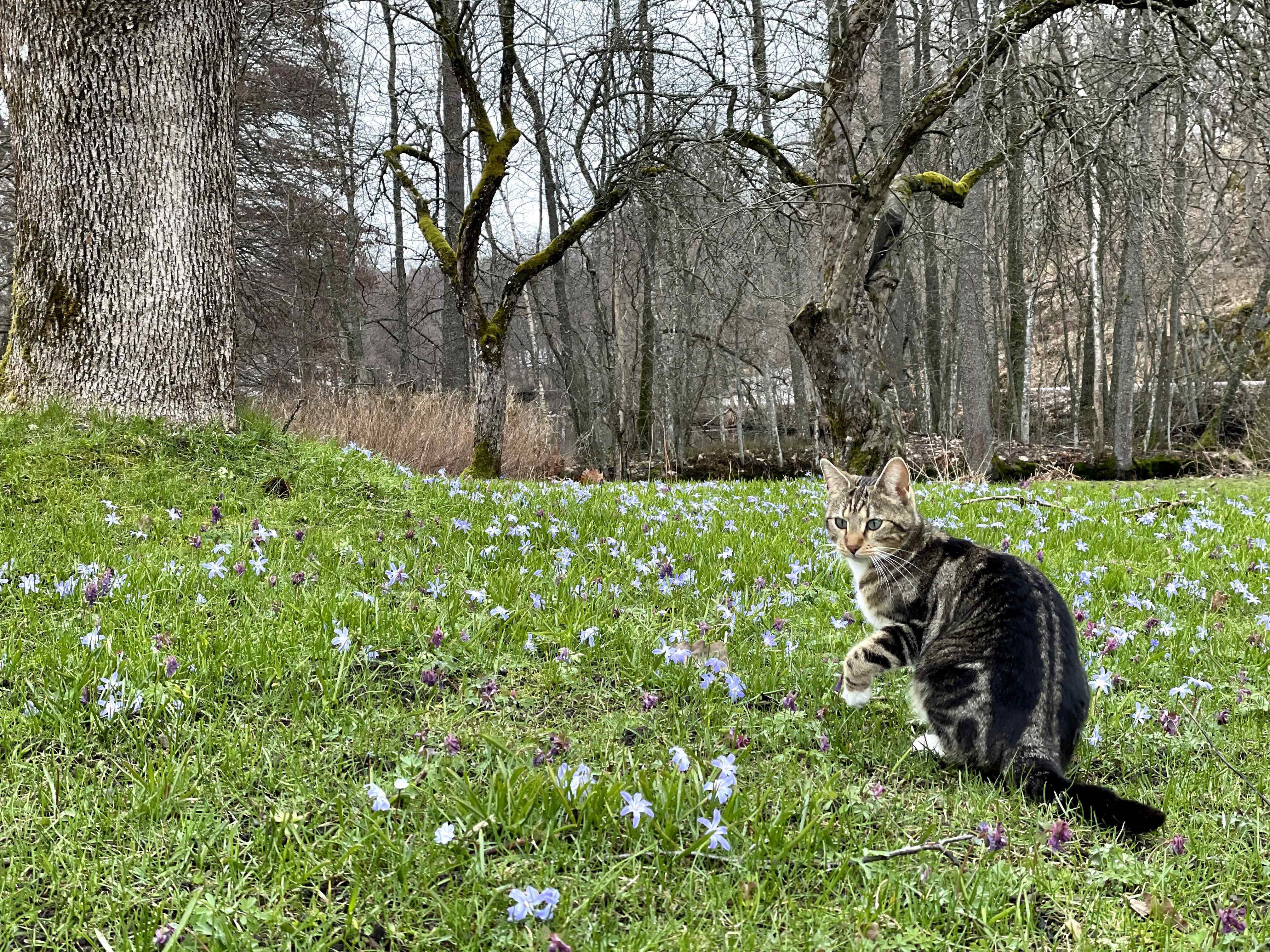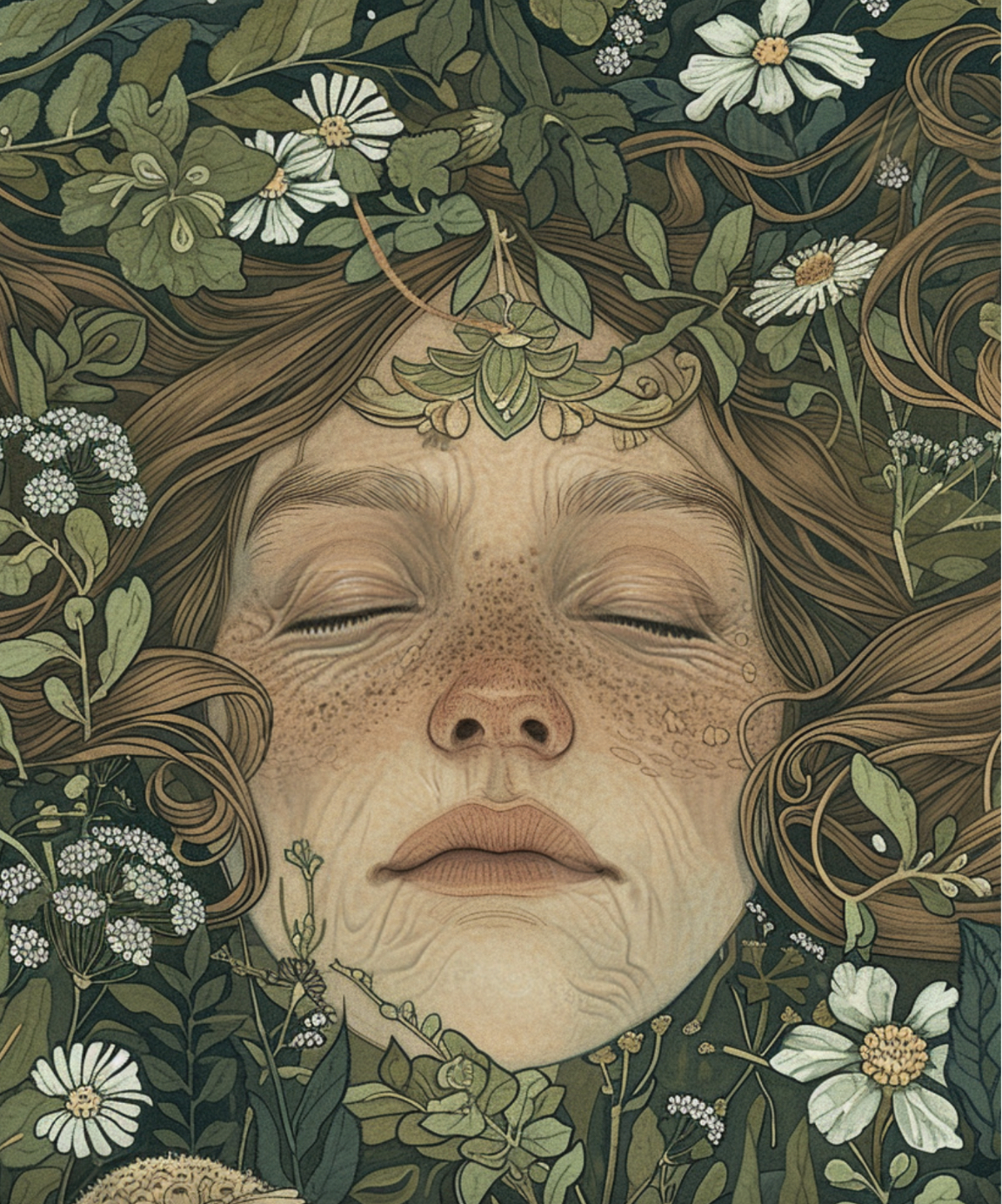In April, nature still looks barren, but a lot is happening beneath the rough surface: tree buds are starting to swell, the dew is losing its grip, and underground, seeds are furiously pushing the soil away to give space for their sprouts to rice. A few of the first spring flowers, such as liverworts in the forest or crocuses along the edges of houses, start to add color to an otherwise still quite gray landscape. Rivers and streams flood as meltwaters seek pathways to escape their icy shackles. The cranes arrive, and their ancient spring call can be heard echoing across the fields and marshes. Snow and ice are still visible here and there, but the earth begins to warm up and prepare for nurturing new life.
If March started the new year and spring, April really opens it. April’s Latin name, Aprilis, is probably originally derived from the Latin word aperire, meaning to open, and also refers to the time when the flowers open. Another theory suggests that the month may have been named after the Greek goddess of love, Aphrodite.
In Rome, April was dedicated to the goddess of love, Venus, and in her honor, the Veneralia festival was celebrated on the first day of the month. The Finnish word for April, “huhtikuu” comes from slash and burn tradition and refers to the marking of pine trees in April, which were later burned in spring to clear the land for cultivation. Burning the trees made the soil fertile as the nutrients from the ashes were released for the benefit of crops.

April was also known in Finland as “kiimakuu,” which translates to “heat month,” as it marks the mating season for grouse and many other forest birds. Even us city dwellers can feel and hear it: all you have to do is tune your ears into bird song frequency. The increasingly intense choruses of bird songs signal the passionate mating serenades taking place. So, April is indeed a very erotic time!
Among several Native American cultures, April is called the “Pink Moon.” The name refers to the pink blossoms of the wild moss phlox, which blooms abundantly in the eastern woodlands of North America. The month is also known by names such as the “Breaking Ice Moon,” “The Moon When Rivers Become Navigable Again”, and “Moon When the Ducks Come Back”. These names charmingly depict the natural occurrences of April.
In the starry sky, the Sun has risen so high that in Northern Finland, April marks the last dark nights. The sunlight has become so bright that it’s already impossible to see the planets.
April could even be described as a playful month after a long winter – it begins with April Fools’ Day and ends with May Day celebrations. So, in April, we get to be playful and shake off the stiffness of winter from our skin.
April Ritual: Full Moon Dances
In April at the latest, we can finally break free from the chains of winter and open our hearts to spring and love! If it doesn’t happen automatically, dancing is an incredibly wonderful way to open up. Organize a party with your friends, dance wildly alone at home, or join a liberating ecstatic dance event aimed at reaching an ecstatic state through free dance and music. Dance until you sweat and forget what you look like, surrender yourself! After the full moon dance ritual, you’ll be ready to embrace the love of summer.
April Ritual: Spring Shout Day on April 14th

In the old Finnish calendar, the year was divided into the spring and winter halves, and in the traditional cycle of the year, spring began on April 14th. This day is also known as Shout Day. Children were sent to the fields with pots and ladles to make noise and scare away predators because the livestock was waiting to be let out, and the predators needed to be driven away from the vicinity before that. Shepherds might also climb high hills to blow a horn in all four directions to drive away predators and announce the beginning of the grazing season.
When was the last time you shouted until your lungs were hoarse, your body relaxed, and you let out all the built-up tension from your body? For modern humans, shouting may be seen as shameful or at least inappropriate for adults. But what if shouting releases something that we should be able to let go of from within ourselves? If you’ve read Astrid Lindgren’s “Ronja the Robber’s Daughter,” you might remember Ronja’s spring shout:
And here Ronja was, plunged headlong into spring. All around her was so wonderful, it filled her completely and she cried like a bird high and shrill, until she had to explain to Birk.
I had to shout a spring cry, otherwise I’d crack. Listen! I guess you can hear spring! They were silent for a moment, listening to the green and the rustling and the murmuring and the singing and the chattering in their forest. The wild, fresh song of spring echoed everywhere, in all the trees and all the waters and all the green bushes. “I can feel winter draining away,” said Ronja. Soon I will be so light that I can fly.
Extract from Astrid Lindgren’s book Ronja Ryövärintytär
Go up high or head to the lakeshore. Take a deep breath and shout in all four directions as loud as your soul can handle! Release the suppressed winter, the inner turmoil, or the joy of spring, and shout until the whole forest or lake echoes! Repeat as many times as you need until you no longer feel the need to shout. Tune in to your feelings and sense your body. Does it feel lighter?
Spring shouting is also fun to do with family or friends together. The chorus of different shouts makes it an even more powerful and enjoyable experience!
April Ritual: Mother Earth Day 22.4.

Mother Earth, Äiti Maa, Gaia, Great Mother, Mother Goddess, Máttaráhkká, Golden Woman, Pacha Mama, Tellus, Papatūānuku… The Mother Goddess has many names and forms depending on culture, language, and era. They all share one idea: Earth itself has gifted us the blessing of life and sustains all life. Mother Earth connects the chains of different species and generations. Its rhythm dictates the cycle of the seasons and the cyclical nature of life on our planet. We are completely dependent on the well-being of the Earth, and we have no alternative planet.
The United Nations General Assembly has declared April 22nd as International Mother Earth Day. The theme day was established in 2009, but the idea itself dates back to the early days of environmental protection in the 1970s. The purpose of the day is to remind us to live in harmony with nature in our daily lives so that future generations also have a fair chance to live a balanced life on our planet.
On Mother Earth Day, it’s wonderful to gather friends together, form a sacred circle, and make a ritualistic pledge for Mother Earth. This year, it could be a commitment to vote for the well-being of Mother Earth through one’s own consumption behavior; for example, reducing the use of environmentally harmful chemicals, consuming fewer animal products, limiting unnecessary travel, or simply consuming less and living more simply.
Would you like to learn more about rituals and live more in tune with the rhythms of nature? I share stories and insights about rituals now also in the form of a newsletter, approximately once a month. Join in!